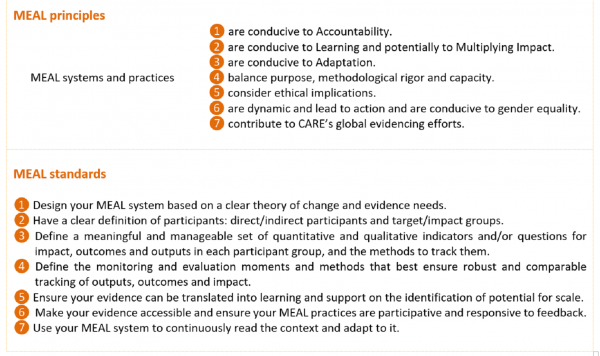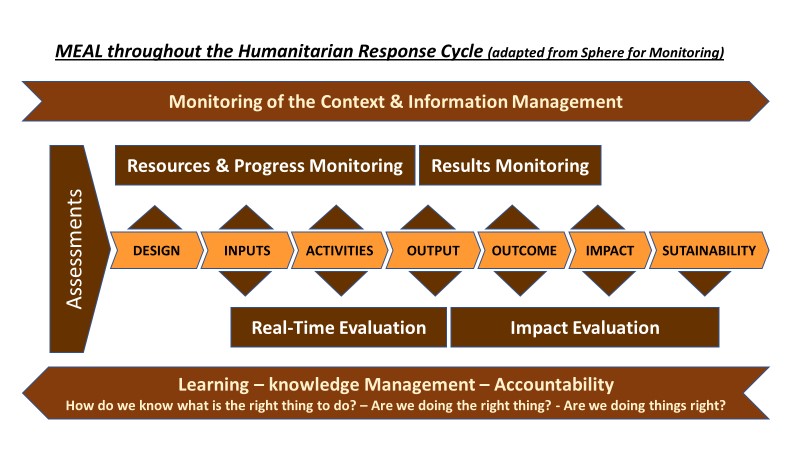MEAL
The foundation of CARE’s approach to Monitoring, Evaluation, Accountability and Learning (MEAL) is the recognition that we work in very dynamic and complex contexts, where changes do not follow a linear timeline or a single pathway.
This section therefore builds on CARE’s global MEAL principles and standards, while at the same recognizes the need to adapt those to the divers humanitarian crisis scenarios to which CARE team across the world have to respond to (see CARE’s Approach to Humanitarian MEL).

MEAL is a critical part of CARE’s Humanitarian Accountability Framework (HAF). It allows us to compare the results of our humanitarian actions with our strategic intent (e.g. CARE Vision 2030 , Humanitarian Impact Area Strategy,) with technical standards (such as Core Humanitarian Standards, SPHERE and companions) and with expected outcomes and benchmarks for the response (from response strategy, proposal frameworks etc.).
Equally important for a humanitarian MEAL system is to support alignment with the three key pillars of Accountability to Affected People (AAP): timely and adequate information sharing (transparency) as well as engagement of crisis affected people in the decision making (participation) and in the review of the response performance (feedback and complaints).
Efficient decision making and evidence-based learning heavily depend on the quality and timeliness of monitoring & evaluation. An agile Monitoring, Evaluation, Accountability and Learning (MEAL) system for humanitarian responses should be adaptable to the scope, scale and the pace of the crisis while at the same time provide a clear indication to the response team about the objectives and activities of the response
At the same time, in a humanitarian response, a ‘good enough’ approach to MEAL may be the only practical possibility. ‘Good enough’ does not mean second best but choosing a simple and timely solution rather a complicated one. As the situation evolves and other options gain feasibility, more sophisticated methods can be applied.
Comprehensive Guidance on Humanitarian MEAL which we will refer to in the section can be found here:
- Humanitarian Needs Assessment – Good Enough Guide
- Impact Measurement and Accountability in Emergencies – Good Enough Guide
- Sphere for Monitoring & Evaluation
- The verification framework of the Core Humanitarian Standard (CHS)
The project lifecycle is a useful tool to understand the tasks and functions of a MEAL system that need to take place in each stage of a humanitarian response to achieve objectives within the available resources and timeframe. The below outlines the key MEAL processes and steps throughout the humanitarian response cycle:

CARE internal information about Humanitarian MEAL is available on the related CARE’s sharepoint section under the CARE Humanitarian Action Hub


